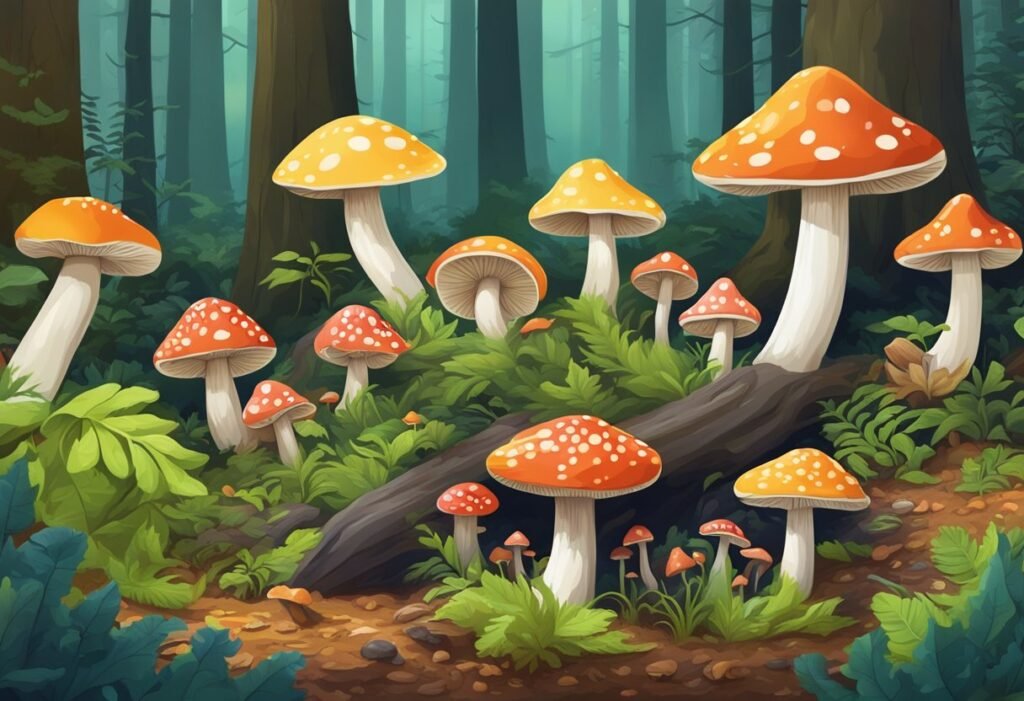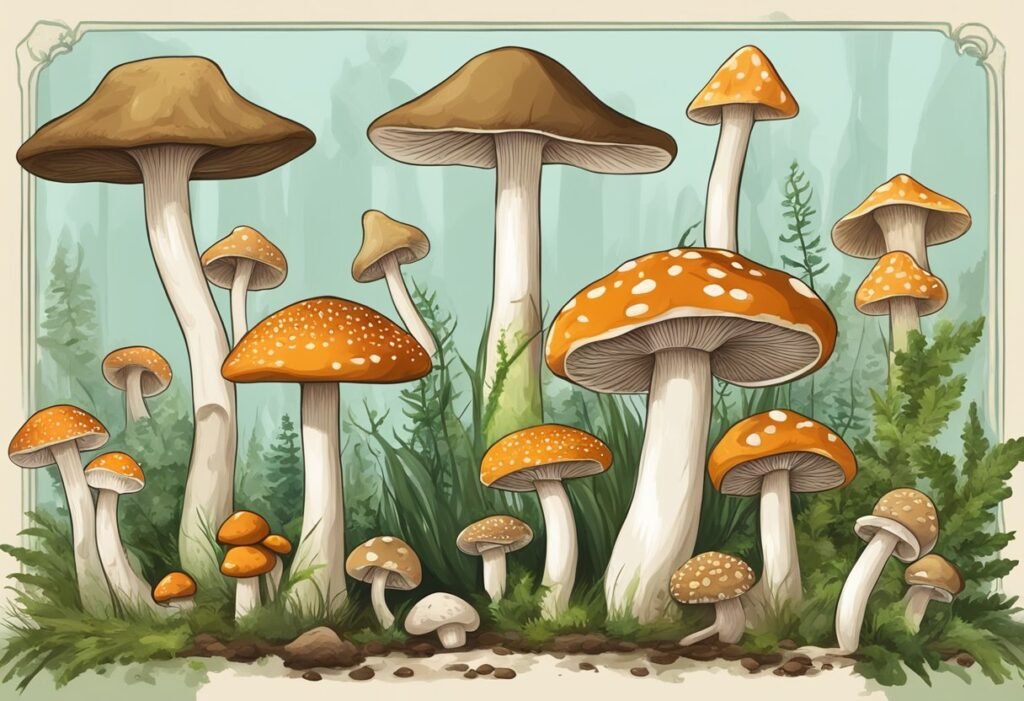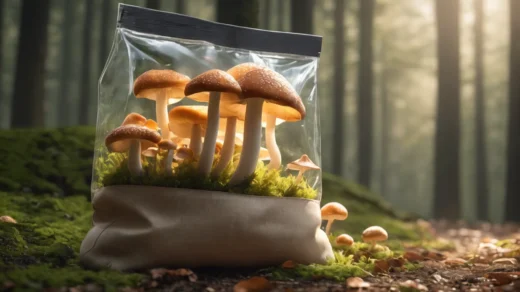Mushrooms are a popular food item in many cultures worldwide, known for their unique taste and texture. However, not all mushrooms are safe to eat. Some mushrooms are poisonous and can cause severe health problems or even death if consumed. It is essential to know which mushrooms are safe to eat and which ones should be avoided.
Several types of poisonous mushrooms can be found in the wild. The most common types of poisonous mushrooms include Amanita phalloides, also known as the Death Cap, and Amanita muscaria, also known as the Fly Agaric. These mushrooms contain toxins that can cause liver and kidney damage, leading to severe health problems or even death. Other poisonous mushrooms include Gyromitra esculenta, which contains a toxin that can cause vomiting, diarrhea, and even convulsions.
It is crucial to know how to identify poisonous mushrooms to avoid consuming them accidentally. While some poisonous mushrooms may resemble edible ones, others have distinct features that make them easy to identify. By learning how to identify poisonous mushrooms, individuals can avoid the risks associated with consuming them and enjoy the benefits of eating safe and delicious mushrooms.
Types of Poisonous Mushrooms

Mushrooms are a popular food item in many cultures, but not all mushrooms are safe to eat. There are several types of poisonous mushrooms that can cause serious harm or even death if ingested. In this section, we will discuss three of the most common types of poisonous mushrooms: Amanita, Galerina, and Lepiota.
Amanita
The Amanita mushroom is one of the most poisonous mushrooms in the world. It contains a deadly toxin called amatoxin, which can cause liver and kidney failure. The Amanita mushroom is responsible for the majority of mushroom-related deaths worldwide. It is important to note that the Amanita mushroom can be easily mistaken for edible mushrooms, as it has a similar appearance to many edible species.
Galerina
The Galerina mushroom is another highly toxic mushroom. It contains a toxin called amanitin, which is similar to the toxin found in the Amanita mushroom. The Galerina mushroom is often found growing in the wild, and can be mistaken for edible mushrooms such as the honey mushroom. Ingesting even a small amount of Galerina can cause severe liver damage and other serious health problems.
Lepiota
The Lepiota mushroom is another poisonous mushroom that can cause serious harm if ingested. It contains a toxin called amatoxin, which can cause liver and kidney failure. The Lepiota mushroom is often found growing in lawns and meadows, and can be mistaken for edible mushrooms such as the parasol mushroom. It is important to be able to identify the Lepiota mushroom and other poisonous mushrooms to avoid accidental ingestion.
In conclusion, there are several types of poisonous mushrooms that can cause serious harm or even death if ingested. It is important to be able to identify these mushrooms and avoid eating them. If you are unsure about the safety of a mushroom, it is best to err on the side of caution and not consume it.
Symptoms of Mushroom Poisoning

Mushroom poisoning can cause a range of symptoms, from mild to severe, depending on the type of mushroom and the amount ingested. The following subsections will describe the early symptoms and severe toxic effects of mushroom poisoning.
Early Symptoms
The early symptoms of mushroom poisoning can start within 30 minutes to 2 hours of ingestion. These symptoms include:
- Nausea
- Vomiting
- Abdominal pain
- Diarrhea
- Sweating
- Dizziness
- Headache
- Weakness
- Fatigue
- Hallucinations
These symptoms are caused by the toxins in the mushroom irritating the gastrointestinal tract and affecting the nervous system. It is important to seek medical attention immediately if any of these symptoms occur after eating mushrooms.
Severe Toxic Effects
Severe toxic effects of mushroom poisoning can occur within 6-12 hours of ingestion. These effects include:
- Liver failure
- Kidney failure
- Respiratory failure
- Coma
- Death
These severe toxic effects are caused by the toxins in the mushroom damaging the liver, kidneys, and other organs. Some types of mushrooms can cause irreversible damage to the liver and lead to liver failure, which can be fatal. It is crucial to seek immediate medical attention if any of these severe toxic effects occur after eating mushrooms.
In conclusion, mushroom poisoning can cause a range of symptoms, from mild to severe, depending on the type of mushroom and the amount ingested. It is important to seek medical attention immediately if any symptoms occur after eating mushrooms, especially if severe toxic effects are present.
Identifying Poisonous Mushrooms
When it comes to identifying poisonous mushrooms, there are a few key physical characteristics and habitat considerations to keep in mind. By paying attention to these factors, you can reduce your risk of accidentally consuming a toxic mushroom.
Physical Characteristics
One of the most important physical characteristics to consider when identifying mushrooms is the cap. The cap is the top part of the mushroom, and it can vary widely in size, shape, and color. Some poisonous mushrooms have caps that are brightly colored or have distinctive markings, while others may have caps that are more subtle in appearance.
Another important physical characteristic to consider is the gills. The gills are the thin, blade-like structures that radiate out from the stem and support the cap. Some poisonous mushrooms have gills that are dark or discolored, while others may have gills that are hidden or difficult to see.
Finally, it’s important to pay attention to the stem. Some poisonous mushrooms have stems that are thick and sturdy, while others may have stems that are thin and fragile. Additionally, some poisonous mushrooms have stems that are covered in distinctive patterns or textures.
Habitat Considerations
In addition to physical characteristics, it’s important to consider the habitat in which the mushroom is growing. Some poisonous mushrooms prefer to grow in specific types of soil or in certain climates, while others may be found in a wide range of environments.
One important factor to consider is whether the mushroom is growing on wood or on the ground. Some poisonous mushrooms, such as the death cap, are commonly found growing on the roots of trees, while others may be found growing on the forest floor.
Another important consideration is the time of year. Many poisonous mushrooms are more likely to be found during certain seasons, so it’s important to be aware of when different types of mushrooms are most likely to be present.
Overall, by paying attention to physical characteristics and habitat considerations, you can increase your ability to identify poisonous mushrooms and reduce your risk of accidental ingestion.
Prevention and Safety Tips
Foraging Best Practices
Foraging for mushrooms can be a fun and rewarding activity, but it is important to exercise caution. Here are some tips to help ensure your safety:
- Always go foraging with an experienced guide or expert who can help you identify which mushrooms are safe to eat.
- Do not rely solely on online resources or field guides to identify mushrooms, as misidentification can be deadly.
- Be sure to wear appropriate clothing and gear, such as sturdy shoes, long pants, and gloves.
- Avoid foraging in areas that may have been contaminated with pesticides or other chemicals.
- Never eat a mushroom that you are not 100% certain is safe to eat.
Culinary Precautions
Even if you are confident in your ability to identify safe mushrooms, there are still some precautions you should take when preparing and cooking them:
- Always wash mushrooms thoroughly before cooking to remove any dirt or debris.
- Trim off any parts of the mushroom that are discolored or damaged.
- Cook mushrooms thoroughly before eating, as this will help to break down any toxins that may be present.
- Avoid eating large quantities of mushrooms at once, as this can increase the risk of adverse reactions.
- If you experience any symptoms of mushroom poisoning, such as nausea, vomiting, or diarrhea, seek medical attention immediately.
By following these tips, you can help to ensure your safety when foraging and cooking mushrooms. Remember, when it comes to mushrooms, it is always better to err on the side of caution.
Treatment and First Aid
Immediate Actions
If someone ingests a poisonous mushroom, it is important to act quickly. The following immediate actions should be taken:
- Call emergency services or go to the nearest hospital immediately.
- Try to identify the mushroom and bring a sample of it with you, if possible.
- Do not induce vomiting unless instructed to do so by a medical professional.
- Do not give the person anything to eat or drink unless instructed to do so by a medical professional.
Medical Interventions
The treatment for mushroom poisoning depends on the type of mushroom and the severity of the symptoms. In general, the following medical interventions may be used:
- Gastric lavage: This is the process of flushing the stomach with water or saline to remove any remaining toxins.
- Activated charcoal: This is a substance that can absorb toxins in the stomach and prevent them from being absorbed into the bloodstream.
- Intravenous fluids: These are given to help support the person’s blood pressure and prevent dehydration.
- Antidotes: Some types of mushroom poisoning have specific antidotes that can be given to counteract the effects of the toxins.
- Liver transplant: In severe cases of mushroom poisoning, a liver transplant may be necessary to prevent liver failure and death.
It is important to note that not all cases of mushroom poisoning require medical intervention. Some mild cases may resolve on their own with supportive care such as rest and hydration. However, it is always better to err on the side of caution and seek medical attention if there is any suspicion of mushroom poisoning.




